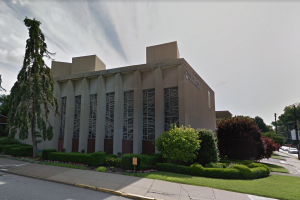US military forces are on heightened alert in Syria after President Donald Trump ordered cruise missile strikes against a Syrian airbase, and Islamic State militants attempted to infiltrate a key garrison in the south.
The combination of events has put US forces on guard, Col. John Dorrian, spokesperson for the US-led coalition, told Grasswire.
“The strikes that were done increased tensions in Syria, and so we’re not going to undertake that action and then discount the possibility that someone may wish to respond,” he said.
Trump ordered the Tomahawk strikes on April 6 after an apparent chemical weapons attack on Syrian civilians that the administration blames on President Bashar al-Assad. The strikes on Al Shayrat base in Homs disabled a number of Syrian warplanes, as well as fuel and munitions, but did not destroy the runway.
Syrian jets were pictured taking off from the base within hours of the missile strikes.
Two days later, Islamic State attacked the At Tanf garrison, a remote base in southern Syria where coalition personnel had reportedly been training rebel forces.
The Wall Street Journal reported on Monday that US special operations forces had left the base after the US missile strikes to avoid possible retaliation from Syria or Russia.
The coalition has generally declined to reveal the locations of US forces in Syria, including the 200-400 Marines and Army Rangers reportedly deployed to the country last month.
Dorrian explained that revealing exact numbers, locations and equipment could put US troops in peril.
Since November 2015, the At Tanf base has been primarily occupied by the New Syrian Army (NSyA), a small rebel force that reportedly receives US military training and equipment.
Dorrian said Islamic State militants tried to infiltrate the garrison.
“The enemy probably saw what they thought was an opportunity to strike a force that’s isolated,” he explained.
US Central Command said in a statement that the militants initiated the attack with a vehicle-borne IED before 20-30 fighters, including some in suicide vests, followed by a ground assault.
Coalition and partner forces responded, first defending the garrison with direct fire, but later calling in multiple airstrikes to destroy the remaining fighters and vehicles.
No US personnel were killed, but Central Command said on Sunday that three US partner forces died in the attack.
The Telegraph identified the casualties as members of the rebel Osoud al Sharqiya group.
Dorrian said US forces were still prepared to defend themselves and coalition partners.
“We have continued supporting our partnered forces throughout Syria, but our forces have had to take some additional force protection measures and certainly are on guard in this time of increased tensions,” he said.
Threats to coalition air operations
Following the US missile strikes, Moscow suspended the deconfliction channel used by coalition and Russian pilots to avoid accidents in Syrian airspace.
Since its creation in October, the deconfliction mechanism was used in other cases, including a Russian airstrike on Syrian Arab Coalition fighters near Manbij last month. In that incident, US forces called the Russians while bombing was underway, ending the assault.
US officials said on Monday that Washington and Moscow had other ways than the telephone line to deconflict operations, but declined to elaborate.
On April 8, VRT Nieuws reported that Belgian defense minister Stephen Vandeput was suspending participation in coalition operations in Syria due to concerns over the deconfliction channel.
According to VRT, Vandeput said Belgium would resume air operations “as soon as the coalition says it’s safe enough and asks us to continue the missions.”
“I would not say that that is something that is a permanent situation,” Dorrian said of the Belgian decision.
He added the coalition would assess potential dangers to its force and take appropriate action, but “from a coalition perspective we continue to conduct operations.”
Islamic State drone attacks
US and Syrian forces pushing toward Raqqa face the additional threat of weaponized drones operated by Islamic State, a tactic that has been well-documented in Iraq.
US forces are supporting the Syrian Democratic Forces assault around the town of Taqba and its dam, a strategic part of the isolation of Islamic State’s de facto capital of Raqqa.
“The enemy has demonstrated a use of that, that they are capable of using commercial, off-the-shelf drone tech to not only observe our forces but also to drop munitions – grenade-sized munitions in most cases – and so certainly that is a concern for us,” Dorrian said.
The drones are adapted from commonly available remote control quadcopters and planes and are apparently controlled with everyday computer software.
Islamic State has claimed a number of drone-based attacks in Syria, including against the Syrian Arab Army in west Palmyra and against US forces near Tabqa.
On March 30, Syrian activist group Raqqa24 said an Islamic State-piloted drone dropped a bomb on a camp near al-Krin, killing a US service member. A coalition spokesperson denied the report and told Grasswire no US personnel had been killed by Islamic State drones.
Dorrian said he wasn’t aware of any Islamic State drone attacks on US forces in Syria, but partnered forces have come under attack.
On April 3, ANHA reported that SDF fighters shot down a drone that was bombing positions near Tabqa airbase.
Islamic State footage published a day earlier purported to show a drone bomb attack on SDF vehicles and boats near Tabqa.
—reporting by Tom Taylor and Fergus Kelly
Islamic State’s air force: attacks and reconnaissance by drones




